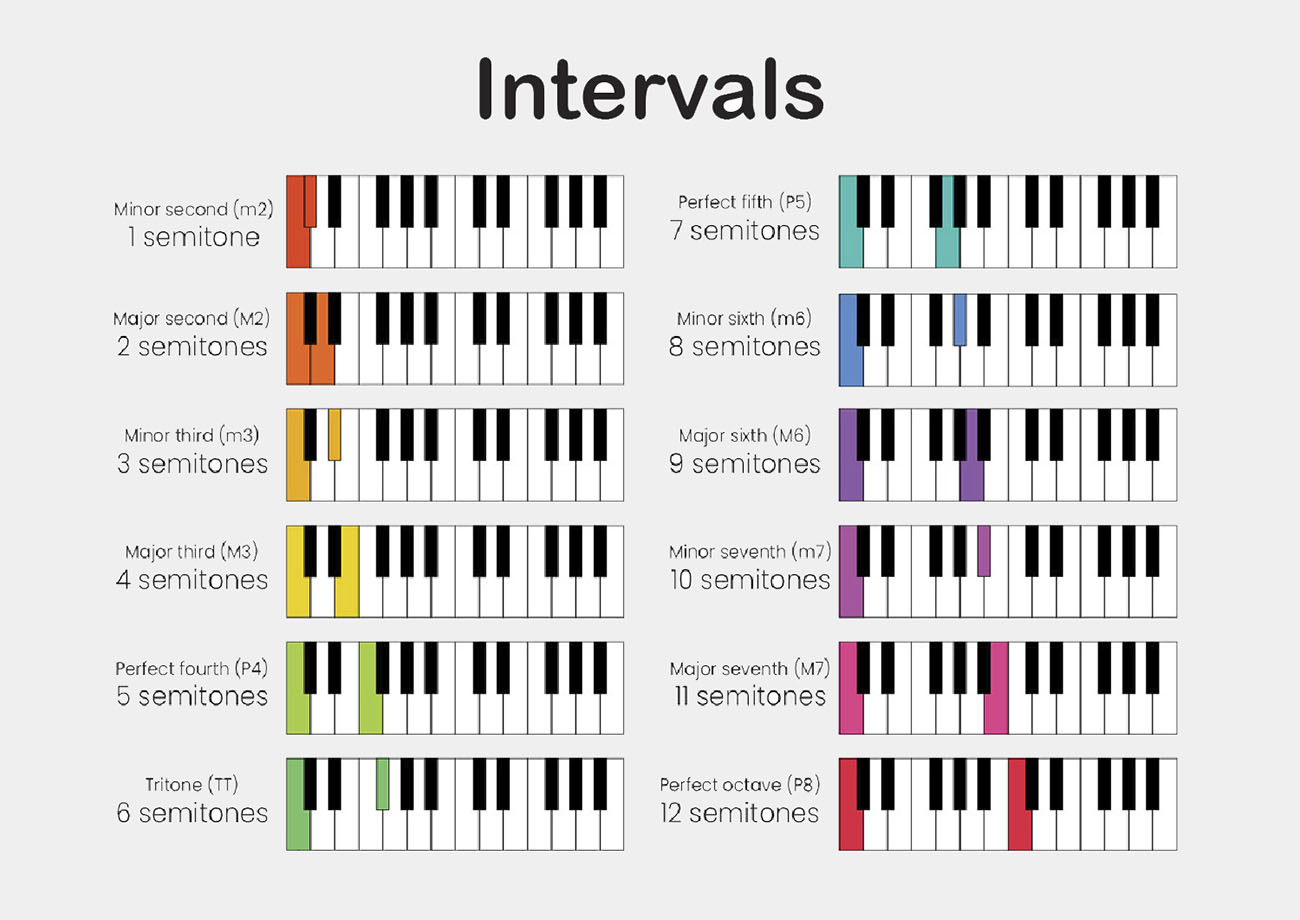Music production is not just about crafting catchy melodies and infectious rhythms—it's also about evoking emotion and telling compelling stories through sound.
As a beat maker, understanding how to harness the power of intervals is critical to creating music that resonates with your audience on a deeper level.
In this comprehensive guide, we'll explore the world of music intervals, exploring how they can be used to build tension and release in beats, ultimately enhancing the emotional impact of your music.
Understanding Music Intervals
Music intervals are the building blocks of melody and harmony, representing the distance between two pitches. They play a crucial role in determining the mood and feel of a musical passage, with different intervals evoking different emotions. Let's explore the basics of music intervals:
Types of Intervals:
Intervals can be classified into various types, including major, minor, perfect, augmented, and diminished. Each type has its distinct sound and emotional connotations.

Emotional Impact of Intervals:
Different intervals have the power to evoke specific emotions in listeners. For example, major intervals often convey feelings of happiness and joy, while minor intervals are associated with sadness or melancholy.
Understanding the emotional implications of each interval is essential for crafting beats that resonate with your audience.
The Role of Tension and Release in Music
Tension and release are fundamental concepts in music theory, governing the ebb and flow of musical energy within a composition. Intervals play a crucial role in creating tension and release, with certain intervals producing dissonance (tension) and others producing consonance (release). Here's how tension and release work in music:
Conceptual Overview:
Tension is created by introducing dissonant intervals that clash with the underlying harmony, creating a sense of instability and anticipation.
Release occurs when these dissonant intervals resolve into consonant ones, providing a sense of resolution and closure.
Intervals and Emotion:
Depending on their emotional impact, specific intervals are often used to build tension or release in music. For example, the tritone interval is notorious for its dissonant sound, making it ideal for creating tension in a composition.
Conversely, the perfect fifth interval is highly consonant, providing a sense of stability and perfect resolution.
Mastering Intervals for Beat Making
Now that we understand the basics of music intervals and their role in creating tension and release, let's explore how to apply this knowledge to beat-making.
Here are some practical tips for using intervals to build emotion in your beats:
Experiment with Interval Combinations: Don't be afraid to experiment with different interval combinations to evoke specific emotions in your beats. Try incorporating dissonant intervals to create tension during the buildup sections of your track, and resolve them into consonant intervals for a satisfying release.
Layering and Harmonization: Experiment with layering multiple instruments or samples that play different intervals simultaneously, creating rich harmonic textures that add depth and complexity to your beats. Harmonizing melodies with complementary intervals can also enhance the emotional impact of your music.
Case Study: "Smells Like Teen Spirit" by Nirvana
To gain a deeper understanding of how intervals are used in beat-making, let's take a closer look at a popular track and dissect how intervals are used to create tension and release.
In "Smells Like Teen Spirit," Nirvana uses intervals to build tension and release throughout the song. The iconic guitar riff features a combination of power chords with perfect fifth intervals, creating a sense of raw energy and aggression.
The dissonant interval between the guitar and vocal melodies adds to the song's chaotic and rebellious atmosphere. In contrast, the resolution to consonant intervals during the chorus provides a moment of catharsis for the listener.
Common Challenges and Solutions
As you explore the world of intervals in beat-making, you may encounter challenges along the way.
Here are some common pitfalls and practical solutions to help you overcome them:
Challenge: Finding the Right Intervals
Finding the right intervals that evoke the desired emotions in your beats can be challenging. Experiment with different interval combinations and listen to how they affect the mood of your music. Trust your instincts, and don't be afraid to think outside the box.
Challenge: Grappling with Harmonic Complexity
As you delve deeper into the world of intervals, you may encounter harmonic complexity that can be difficult to navigate. Take your time to study music theory concepts related to harmony and chord progressions, and practice incorporating them into your beats. With persistence and dedication, you'll develop the skills to create emotionally compelling music.
By mastering the art of intervals, you can elevate your beat-making skills to new heights, creating emotionally resonant music that captivates your audience. Embrace experimentation, explore the expressive potential of different interval combinations, and don't be afraid to push the boundaries of conventional harmony.
Ready to put your newfound knowledge into action? Join the vibrant community of music creators on BeatConnect, where you can collaborate, share ideas, and showcase your beats to the world. Sign up today and take your beat-making journey to the next level!

